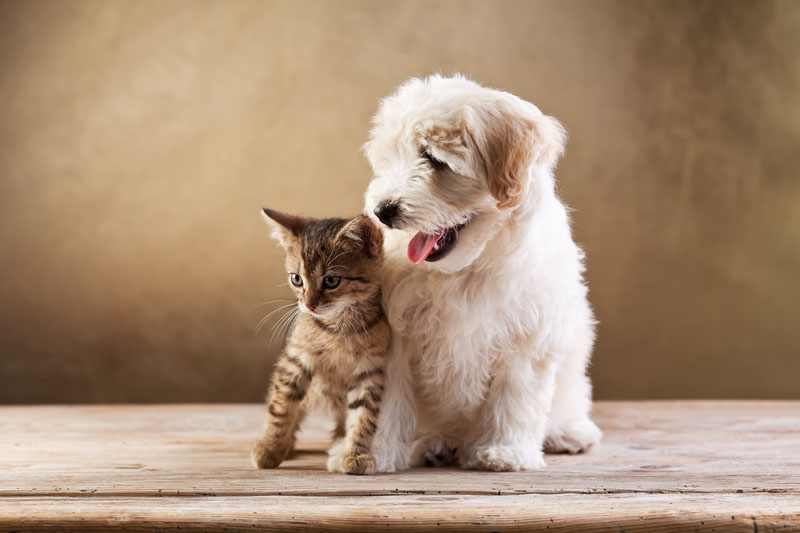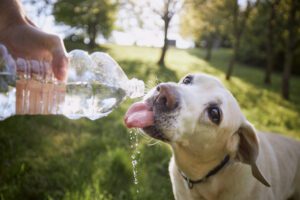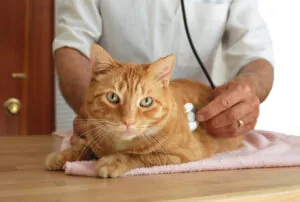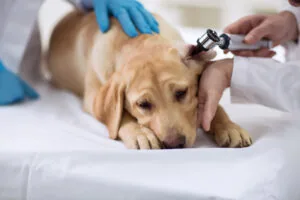The Importance of Spaying/Neutering Your Pet

For some dogs and cats, the importance of spaying or neutering your pet can be the difference between life and death. Spaying or neutering is a simple, low-cost procedure that can reduce animal abandonment rates, improve the health and longevity of your pet, decrease the overall cost of care, and prevent the deaths of millions of dogs and cats.
Why Spay and Neuter?
Population Control
By spaying or neutering your pet, you’ll help control the pet homelessness crisis, which results in millions of healthy dogs and cats being euthanized in the United States each year simply because there aren’t enough homes to go around. There are also medical and behavioral benefits to spaying (female pets) and neutering (male pets) your animals. Millions of healthy dogs and cats are being euthanized in shelters across the world each year because there are not enough homes to go around. And uncounted millions more suffer illness, starvation, and death on the streets despite the fact that – as some experts calculate – these numbers could be reduced by 65% – 70% if we simply prevented unwanted litters of puppies and kittens. Did you know that a single non-spayed female dog and her non-spayed offspring can produce 67,000 puppies in only 6 years? Or that one non-spayed female cat and her non-spayed offspring can produce 370,000 kittens in only 7 years? Perhaps surprisingly, not all of them are born to homeless street animals. Many times they are the unwanted puppies and kittens of family pets. These numbers are staggering. The problem is dire. But we can all be a part of the solution if we will spay or neuter the pets we adopt into our homes.
Health Benefits of Spaying and Neutering
Your female pet will live a longer, healthier life. Spaying helps prevent uterine infections and breast tumors, which are malignant or cancerous in about 50 percent of dogs and 90 percent of cats. Spaying your pet before her first heat offers the best protection from these diseases. Neutering your male companion prevents testicular cancer and some prostate problems. Your spayed female pet won’t go into heat. While cycles can vary, female felines usually go into heat four to five days every three weeks during breeding season. In an effort to advertise for mates, they’ll yowl and urinate more frequently—sometimes all over the house! Your male dog will be less likely to roam away from home. An intact male will do just about anything to find a mate, including finding creative ways to escape from the house. Once he’s free to roam, he risks injury in traffic and fights with other male animals. Your neutered male may be better behaved. Unneutered dogs and cats are more likely to mark their territory by spraying strong-smelling urine all over the house. Your dog might be less likely to mount other dogs, people, and inanimate objects after he’s neutered. Some aggression problems may be avoided by early neutering.
Breeding/Puppies
Remember that while a litter of puppies and kittens are undeniably adorable, there are many cute pets at a nearby animal shelter in need of loving forever homes. Whether their previous owners lacked the time or the funds to care for them, most animals brought into shelters are compassionate, kind, and no less deserving of a home. By spaying or neutering your pet, you will be acting in the best interest of the animal’s health, saving money in the long run, and potentially providing a deserving, homeless animal with a loving home.
When?
The customary age for neutering or spaying dogs is 6 – 9 months of age, but the procedure is sometimes performed earlier (as early as 12 – 16 weeks in certain breeds). The customary age for neutering or spaying cats is 5 – 7 months of age, but the procedure is sometimes performed earlier (as early as 8 – 10 weeks in certain cases). Dogs and cats can be spayed or neutered as adults, too. If you’re adopting an adult animal, the enormous need to spay and neuter still applies! Of course, to determine the best age to spay/neuter your own pets, always consult your veterinarian.
Costs
The cost of a spay or neuter surgery depends on the weight, age, and sex of your pet, whether or not your pet requires vaccinations and a number of other variables. It is important to remember, however, that it is a small, one-time cost compared to the numerous benefits it provides, and the number of unwanted issues that it will help you and your pet avoid. When you factor in the long-term costs potentially incurred by a non-altered pet, the savings afforded by spay/neuter are clear (especially given the plethora of low-cost spay/neuter clinics). Caring for a pet with reproductive system cancer or pyometra can easily run into the thousands of dollars—five to ten times as much as a routine spay surgery. Additionally, unaltered pets can be more destructive or high-strung around other dogs. Serious fighting is more common between unaltered pets of the same gender and can incur high veterinary costs. Renewing your pet’s license can be more expensive, too. Many counties have spay/neuter laws that require pets to be sterilized or require people with unaltered pets to pay higher license renewal fees. If high costs are a major deterrent of spaying or neutering your pet, there are numerous low-cost services found in various regions of the United States, and even many assistance programs that help subsidize the cost of spaying/neutering at local clinics. However, it is important to remember that like many other “discount” programs, you might not always be receiving the best possible care and should thoroughly research them beforehand. By choosing to spay or neuter your pet, you can save a tremendous amount of money in the long-term when factoring in costs potentially incurred by a non-altered pet.
What is involved in the procedure?
A routine neuter involves a small incision just in front of the scrotum; the spermatic cord and vessels to each testicle is ligated and severed so that both testicles are removed through this incision. The incision is typically closed with absorbable sutures that will dissolve in a few weeks’ time.
A routine spay involves a midline abdominal incision – the uterus and ovaries are excised, vessels ligated, and the abdomen is closed in several layers of absorbable suture.
PreOperation/Recovery
Your veterinary clinic will provide pre-surgical advice that you should follow. In general, avoid giving your cat any food after midnight the night before surgery. A puppy or kitten, however, needs adequate nutrition, and your veterinarian may advise that food not be withheld. Your veterinarian can also provide post-operative instructions for you to follow. Although your pet may experience some discomfort after surgery, your veterinarian can take various measures to control pain. Depending on the procedure performed, medication for pain may be sent home with your pet. Provide your pet with a quiet place to recover indoors and away from other animals. Prevent your pet from running and jumping for up to two weeks following surgery, or as long as your veterinarian recommends. Prevent your pet from licking the incision site, which may cause infection, by distracting your pet with treats or by using an Elizabethan collar. Avoid bathing your pet for at least ten days after surgery. Check the incision site daily to confirm proper healing. If you notice any redness, swelling or discharge at the surgery site, or if the incision is open, please contact your veterinarian. Also, call your veterinarian if your pet is lethargic, has a decreased appetite, is vomiting or has diarrhea or any other concerns following surgery.
Clearly, spaying and neutering your pet provides health benefits to the animal and the community but there’s also a financial benefit. The cost of the procedure is less expensive than caring for a dog or cat suffering from an infection or cancer. There’s a greater chance of abandonment or dropping the pet at a shelter when owners are overwhelmed by the time and cost associated with caring for a pregnant pet and newborn puppies and kittens. The financial burden is then placed on the rescues and shelters which may not be funded to care for so many animals, therefore resulting in mass euthanasia. Spaying and neutering reduce the overpopulation of pets in shelters and rescues, eliminate certain infections, diseases and unwanted behaviors, and are a low-cost part of your pet’s overall healthcare.
Share This Post
Recent Posts
About Shallowford Animal Hospital
Shallowford Animal Hospital and The Pet Spa at Shallowford are dedicated to the exceptional, compassionate care your pet deserves. Pets hold a very special place in our families, and we treat yours like our own.



